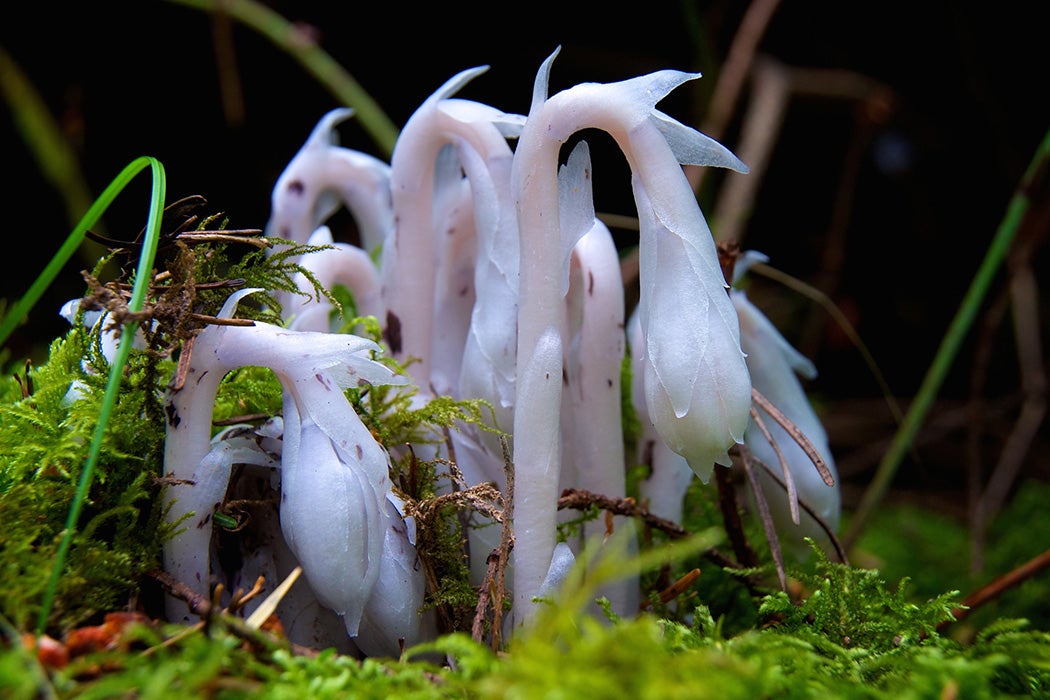You’ve probably heard about carnivorous plants, like the sundews and the Venus flytrap, but what about plants that feed on other plants?
Some plants don’t have chlorophyll, so they can’t turn sunlight into the carbon that is fundamental to their lives. One is the aptly named ghost pipe (Monotropa uniflora), found in temperate parts of Asia and North and South America. Usually waxy white, it might be mistaken for a strange mushroom on the forest floor. But if you look closely, you’ll see small leaves and flowers, and maybe even pollinators visiting those flowers. So how do they manage without chloroplasts?
Nonphotosynthetic mycorrhizal plants, as biologist Martin I. Bidartondo calls them, are also known as myco-heterotrophes. Put simply, they’re parasites. They hack into the “wood wide web,” the intricate network of plant roots and mycorrhiza (fungi) that runs through the soil.
We have known since the late nineteenth century that plants and fungi are interwoven below ground, and that this symbiotic relationship benefits both components of the network. As the plant-mycorrhiza relationship started being teased out, thanks in part to better microscopes, the popular conception of evolution was that it was a thing of fierce and unrelenting competition. In the words of philosopher and biologist Herbert Spencer (1820–1903), evolution was all about the “survival of the fittest,” not unlike the prevailing view of economics. Yet mutualisms like the plant-mycorrhizal relationship suggest a more complicated and diversely interconnected history of life.

Bidartondo summarizes the relationship: “plants and fungi engaged in mycorrhizal symbioses exchange plant-generated photosynthates for fungal-acquired soil mineral nutrients, and this allows both partners to complete their life cycles.”
So why shouldn’t other plants have evolved to tap into this mutual feeding fest for their own benefit? Myco-heterotrophes like the ghost pipe suck up the carbon produced by neighboring trees or other plants. With their roots wrapped up to the same kinds of fungi as those that envelop the roots of carbon-producing plants, these nonphotosynthizers subvert the mutualism.
Bidartondo notes that much remains to be discovered about the complications of such “tripartite symbiosis.” A “fascinating but methodologically challenging” question is whether “myco-heterotrophic plants have measurable costs to their fungal hosts.”
Weekly Newsletter
It’s highly likely that these nonphotosynthetic plants evolved from standard photosynthetic plants. Perhaps it wasn’t easy being green for them on the shady forest floor. Or maybe it was just too easy to sink roots into a river of energy and nutrients created by other life forms.
“Symbiosis is an evolutionary and ecological continuum where individuals, populations and species can fluctuate between mutualism and parasitism,” writes Bidartondo. There may be no better example than these curious, plant-sucking plants connected to other plants via fungal threads.







